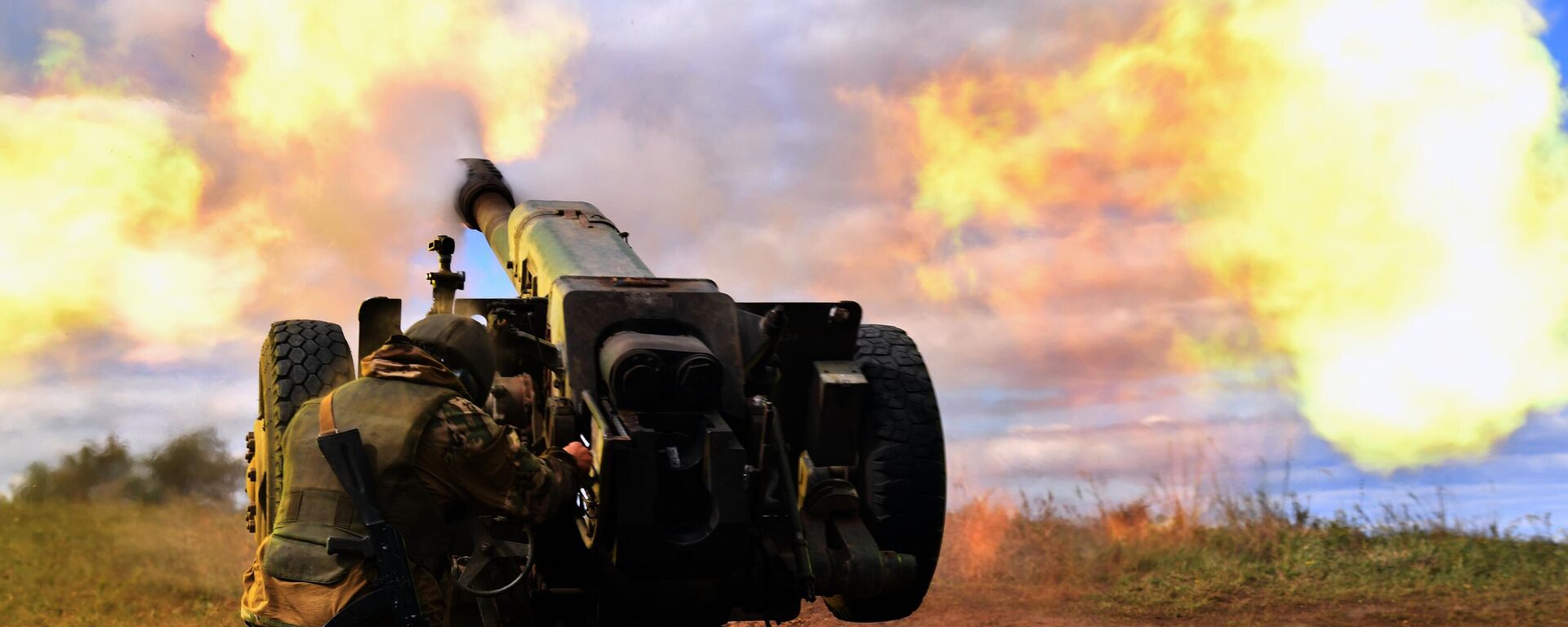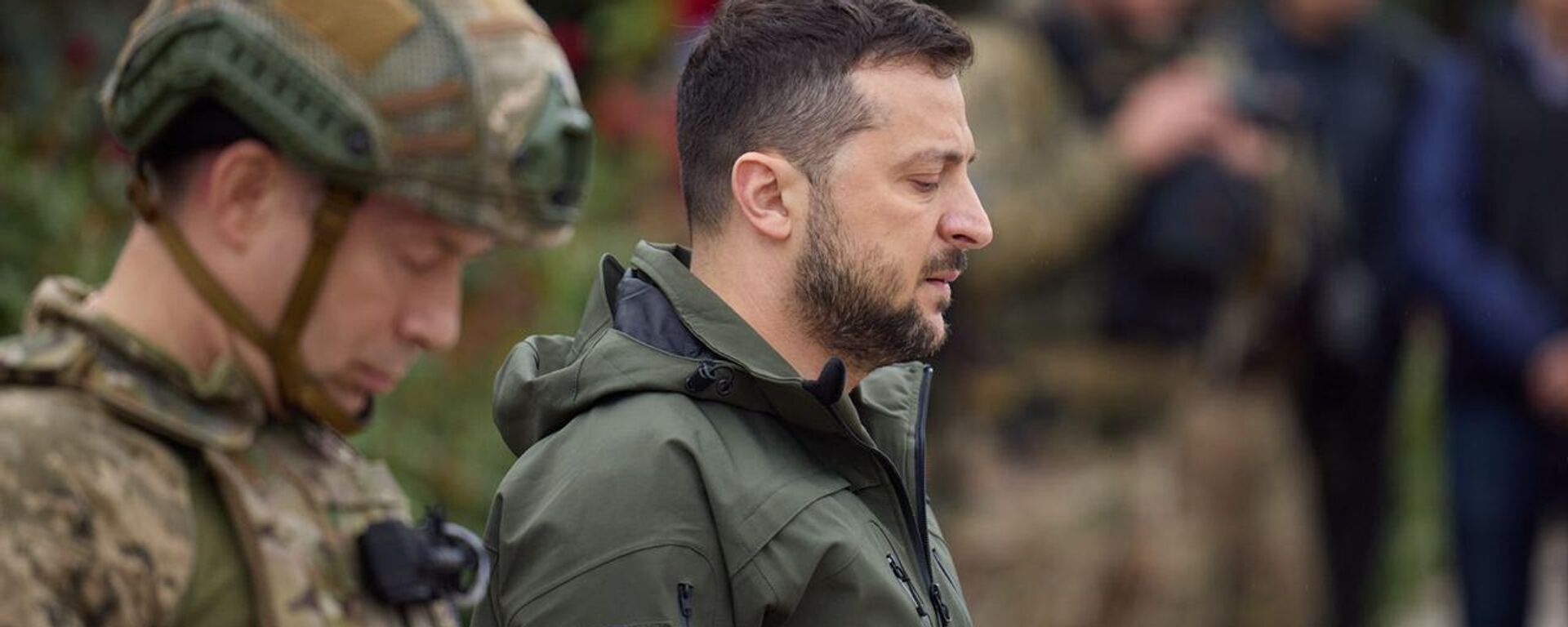https://sputnikglobe.com/20230111/victory-in-soledar-opens-door-to-liberation-of-all-donbass-dpr-lawmaker-says-1106229686.html
Victory in Soledar Opens Door to Liberation of All Donbass, DPR Lawmaker Says
Victory in Soledar Opens Door to Liberation of All Donbass, DPR Lawmaker Says
Sputnik International
Russian forces have established control over Soledar, a town lying around 18 km from Bakhmut (Artyomovsk), which has recently become the linchpin of the Russo-Ukrainian standoff.
2023-01-11T16:39+0000
2023-01-11T16:39+0000
2023-01-11T16:45+0000
russia's special operation in ukraine
ukraine
opinion
russia
dpr
lpr
donbass
ceasefire
attacks
offensive
https://cdn1.img.sputnikglobe.com/img/07e6/09/12/1100922695_0:160:3073:1888_1920x0_80_0_0_4fca8bb25cdf7c8178c859e26ebfa67c.jpg
"Donbass is the main direction [of offensive] now; as you can see, it goes on the Artemovsk-Soledar-Seversk line," Vladislav Berdichevsky, a lawmaker of the parliament of Russia's Donetsk People's Republic (DPR), told Sputnik. "This is now the first line of defense from this side. On the other hand, there is Maryinka, Krasnogorovka, and Avdeevka. There is also a very tense situation there now. But so far, there have been more positional battles there than in Soledar-Artemovsk. Soledar is almost under control now. A mini-cauldron was created there, closer to the west of Soledar."Acting head of the DPR, Denis Pushilin, announced on Tuesday that the Wagner Group private military company (PMC) had gained the center of the town of Soledar. Pushilin noted that Ukrainian troops had been suffering serious losses but continued to resist. On Wednesday, Russian forces managed to spread their control over the rest of the town. A fighting cauldron has been formed in the center of the city, where urban battles are taking place, according to the company’s head, Yevgeny Prigozhin.The liberation of Soledar will not only pave the way to the taking of Artyomovsk (Bakhmut), but will also ensure the liberation of other parts of the former Donetsk region, including Slavyansk, Konstantinovka, Druzhkovka, Kramatorsk and further north, according to Berdichevsky.Makeevka Attack & Christmas CeasefireOn January 1, at 00:01 Moscow time (21:01 December, 31 GMT), Ukrainian artillery fired six HIMARS rockets at a temporary deployment point of a Russian military unit in the area of Makeevka, with two rockets intercepted by air defense. The attack claimed the lives of 89 Russian soldiers.Following the Kiev regime's strike, Moscow called on the Ukrainian leadership to implement a ceasefire on Orthodox Christmas Day to allow Russian and Ukrainian civilians to celebrate the sacred holiday.Russian President Vladimir Putin instructed the Defense Ministry to introduce a 36-hour ceasefire along the line of contact between the warring sides from January 6-7. However, Moscow's request was rejected by Kiev: the Ukrainian military continued to shell Russia's military positions and residential areas during the holiday.Kiev's snubbing of Russia's ceasefire initiative is hardly surprising given that the Ukrainian authorities are doing everything to keep the war going as long as possible, according to Berdichevsky. He pointed out that the Kiev regime's strings are actually being pulled by US policy-makers, who have forbidden Ukraine from conducting any negotiations with Moscow, because the goal of the US is to bleed Russia dry and to try to Balkanize it.After the Christmas holidays, the Russian military avenged the Makeevka tragedy. In the result of the retaliatory operation, over 600 Ukrainian troops were reportedly eliminated in the city of Kramatorsk, according to the Russian Ministry of Defense.Berdichevsky highlighted that the Russian military is attacking positions of the Ukrainian nationalists on a regular basis. He added that Banderites – the ideological heirs of Nazi Germany collaborator Stepan Bandera – are typically deploying their units in civilian facilities, including schools and kindergartens, especially old Soviet ones which have big thick walls."I just think that we need to cover this more actively in the media," Berdichevsky remarked, adding that "the enemy’s losses can be quite large during the day precisely from attacks on temporary accommodation points."Russian OffensiveThe Russian military is making progress on the ground, even though in the very beginning of the special military operation there were certain setbacks, according to Berdichevsky.To illustrate his point the lawmaker noted that at the initial phases of the conflict, Russian troops did not have enough unmanned aerial vehicles (UAVs) which had earlier been instrumentalized by both Ukrainian and Donbass military personnel.Moscow managed to quickly fill this gap: Russia-made "Geran-2" and "Lancet" drones are being successfully used in Ukraine now.Likewise, the coordination between Russia's units and the understanding of the situation on the ground has been elevated to a new level, according to the DPR lawmaker."I see great prospects for Russia," said Berdichevsky. "The mobilized units are being trained and their number at the front is somewhere around 30% of those who were mobilized. They are being trained and undergoing combat coordination. Therefore, we hope that the Russian offensive will be kicked off in the near future."
https://sputnikglobe.com/20230110/battle-for-bakhmut-why-the-city-is-key-to-russias-liberation-of-donbass-1106197085.html
https://sputnikglobe.com/20221223/in-search-of-big-bucks-zelensky-zips-over-to-washington-1105734105.html
ukraine
russia
donbass
kiev
Sputnik International
feedback@sputniknews.com
+74956456601
MIA „Rossiya Segodnya“
2023
News
en_EN
Sputnik International
feedback@sputniknews.com
+74956456601
MIA „Rossiya Segodnya“
Sputnik International
feedback@sputniknews.com
+74956456601
MIA „Rossiya Segodnya“
ukraine, donbass, soledar, bakhmut, who is controlling soledar, pmc wagner group, russian offensive, makeevka attack, russia's christmas ceasefire
ukraine, donbass, soledar, bakhmut, who is controlling soledar, pmc wagner group, russian offensive, makeevka attack, russia's christmas ceasefire
Victory in Soledar Opens Door to Liberation of All Donbass, DPR Lawmaker Says
16:39 GMT 11.01.2023 (Updated: 16:45 GMT 11.01.2023) Russian forces have established control over Soledar, a town lying around 18 km from Bakhmut (Artyomovsk), which has recently become the linchpin of the Russo-Ukrainian standoff.
"Donbass is the main direction [of offensive] now; as you can see, it goes on the Artemovsk-Soledar-Seversk line," Vladislav Berdichevsky, a lawmaker of the parliament of Russia's Donetsk People's Republic (DPR), told Sputnik.
"This is now the first line of defense from this side. On the other hand, there is Maryinka, Krasnogorovka, and Avdeevka. There is also a very tense situation there now. But so far, there have been more positional battles there than in Soledar-Artemovsk. Soledar is almost under control now. A mini-cauldron was created there, closer to the west of Soledar."
Acting head of the DPR, Denis Pushilin, announced on Tuesday that the Wagner Group private military company (PMC)
had gained the center of the town of Soledar. Pushilin noted that Ukrainian troops had been suffering serious losses but continued to resist.
On Wednesday, Russian forces managed to spread their control over the rest of the town. A fighting cauldron has been formed in the center of the city, where urban battles are taking place, according to the company’s head, Yevgeny Prigozhin.
The liberation of Soledar will not only pave the way to the taking of Artyomovsk (Bakhmut), but will also ensure the liberation of other parts of the former Donetsk region, including Slavyansk, Konstantinovka, Druzhkovka, Kramatorsk and further north, according to Berdichevsky.
"It is important to 'grind' this line of defense now, [Ukraine's] most combat-ready units are there, Ukrainian special forces are participating there, and, in principle, everyone is pulling up there," the DPR lawmaker said. "Judging from obituaries there are a lot of dead there, including border guards and policemen. That is, various units are involved there, they seem to be thrown there all the time for support and they are crushed there by our troops."

10 January 2023, 15:00 GMT
Makeevka Attack & Christmas Ceasefire
On January 1, at 00:01 Moscow time (21:01 December, 31 GMT), Ukrainian artillery fired six HIMARS rockets at a temporary deployment point of a Russian military unit in the area of Makeevka, with two rockets intercepted by air defense. The attack claimed the lives of 89 Russian soldiers.
Following the Kiev regime's strike, Moscow called on the Ukrainian leadership to implement a ceasefire on Orthodox Christmas Day to allow Russian and Ukrainian civilians to celebrate the sacred holiday.
Russian President Vladimir Putin instructed the Defense Ministry to introduce a 36-hour ceasefire along the line of contact between the warring sides from January 6-7. However, Moscow's request was rejected by Kiev: the Ukrainian military
continued to shell Russia's military positions and residential areas during the holiday.
Kiev's snubbing of Russia's ceasefire initiative is hardly surprising given that the Ukrainian authorities are doing everything to keep the war going as long as possible, according to Berdichevsky. He pointed out that the Kiev regime's strings are actually being pulled by US policy-makers, who have forbidden Ukraine from conducting any negotiations with Moscow, because the goal of the US is to bleed Russia dry and to try to Balkanize it.
"[Washington] hoped that the supply of weapons and funding to Ukraine would lead to many casualties in Russia and mass unrest," the DPR lawmaker said, adding that the US and its NATO allies have failed to reach their objectives. "Their goal is a war to the last Ukrainian, there will be no negotiations, I think, there will only be [Kiev's] capitulation."
After the Christmas holidays,
the Russian military avenged the Makeevka tragedy. In the result of the retaliatory operation, over 600 Ukrainian troops were reportedly eliminated in the city of Kramatorsk, according to the Russian Ministry of Defense.
Berdichevsky highlighted that the Russian military is attacking positions of the Ukrainian nationalists on a regular basis. He added that Banderites – the ideological heirs of Nazi Germany collaborator Stepan Bandera – are typically deploying their units in civilian facilities, including schools and kindergartens, especially old Soviet ones which have big thick walls.
"I just think that we need to cover this more actively in the media," Berdichevsky remarked, adding that "the enemy’s losses can be quite large during the day precisely from attacks on temporary accommodation points."

23 December 2022, 16:01 GMT
The Russian military is making progress on the ground, even though in the very beginning of the special military operation there were certain setbacks, according to Berdichevsky.
To illustrate his point the lawmaker noted that at the initial phases of the conflict, Russian troops did not have enough unmanned aerial vehicles (UAVs) which had earlier been instrumentalized by both Ukrainian and Donbass military personnel.
"For the Russian troops it was a surprise that the first and second [military] corps of Lugansk had drones, that they actively used them; and the Russian army relied on satellites, as they used to do in Syria," Berdichevsky said. "But here the situation is different. Ukraine has a lot of unmanned aircraft. They used them more actively; [UAVs] have already been tested on the front lines."
Moscow managed to quickly fill this gap: Russia-made "Geran-2" and "Lancet" drones are being successfully used in Ukraine now.
Likewise, the coordination between Russia's units and the understanding of the situation on the ground has been elevated to a new level, according to the DPR lawmaker.
"I see great prospects for Russia," said Berdichevsky. "The mobilized units are being trained and their number at the front is somewhere around 30% of those who were mobilized. They are being trained and undergoing combat coordination. Therefore, we hope that the Russian offensive will be kicked off in the near future."




